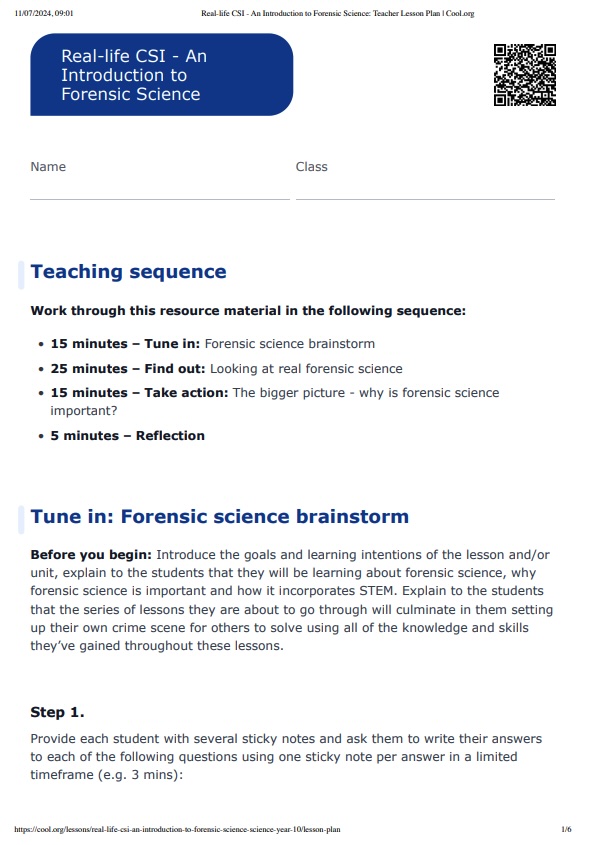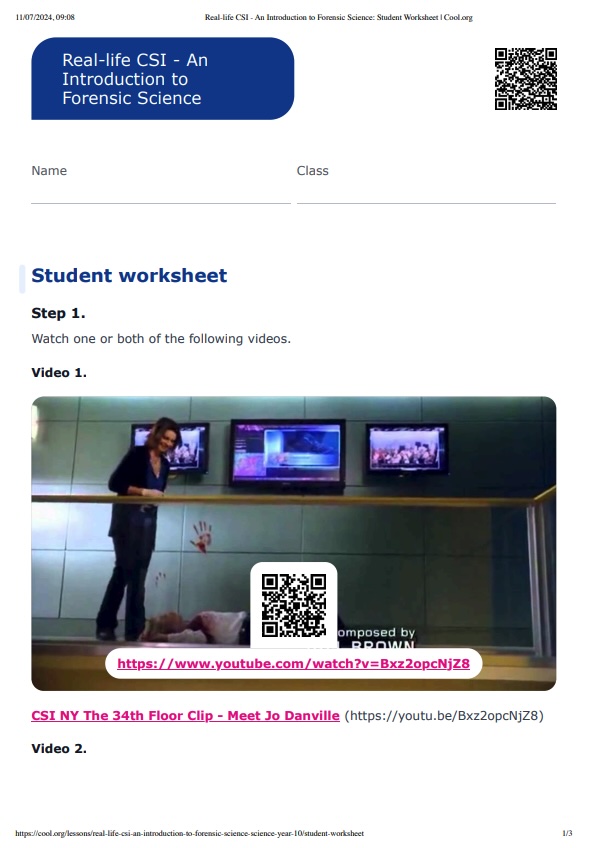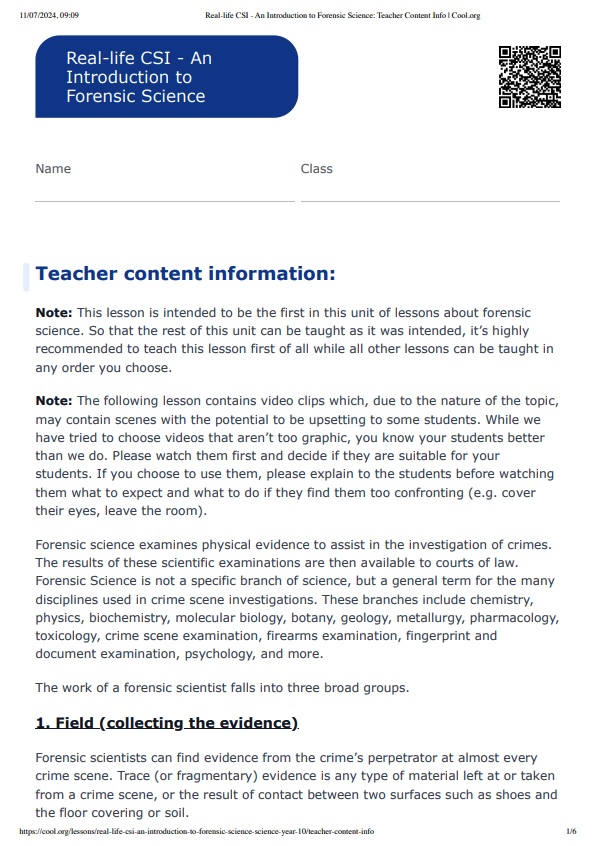Lesson summary
Students explore what they know (or think they know) about Forensic Science. They will then learn what is really involved in Forensic Science and how it compares to what is portrayed in popular culture.
Learning intentions:
Students will...
- unpack what they already know about Forensic Science
- understand the United Nations Sustainable Development Goals (UNSDG) and how they are relevant to Forensic Science
- understand Forensic Science and how it incorporates STEM
- describe what Forensic Science is and how it is similar and different from what is portrayed in popular culture.
Success criteria:
Students can...
- compare popular culture and real-life ideas about Forensic Science.
Lesson guides and printables
Curriculum links
Select your curriculum from the options below.
Lesson details
21st Century Skills
This lesson is designed to build students’ competencies in the following skills:
- critical thinking
- collaboration
- ethical understanding
- global citizenship
- problem solving
Curriculum Mapping
Australian Curriculum content descriptions:
Year 10 Science:
- investigate how advances in technologies enable advances in science, and how science has contributed to developments in technologies and engineering (AC9S10H02)
- examine how the values and needs of society influence the focus of scientific research (AC9S10H04)
Syllabus outcomes: SC5-12ES, SC5-13ES
General capabilities: Critical and creative thinking, Ethical Understanding, Literacy
Relevant parts of Year 10 achievement standards: Students analyse the relationship between science, technologies and engineering. They analyse the key factors that influence interactions between science and society.
This lesson is part of the wider unit of work: Real-life CSI – Secondary
Time required: 60 mins
Level of teacher scaffolding: Medium – facilitated class discussion required
Resources Required
- article (optional): CSI effect’ has juries wanting more evidence
- device capable of presenting a video to the class
- sticky notes
- Student Worksheet (one copy per student)
Additional Info
This is an original Cool+ lesson.




Welcome back!
Don't have an account yet?
Log in with:
Create your free Cool.org account.
Many of our resources are free, with an option to upgrade to Cool+ for premium content.
Already have an account?
Sign up with:
By signing up you accept Cool.org's Terms and Conditions(Opens in new tab) and Privacy Policy(Opens in new tab).